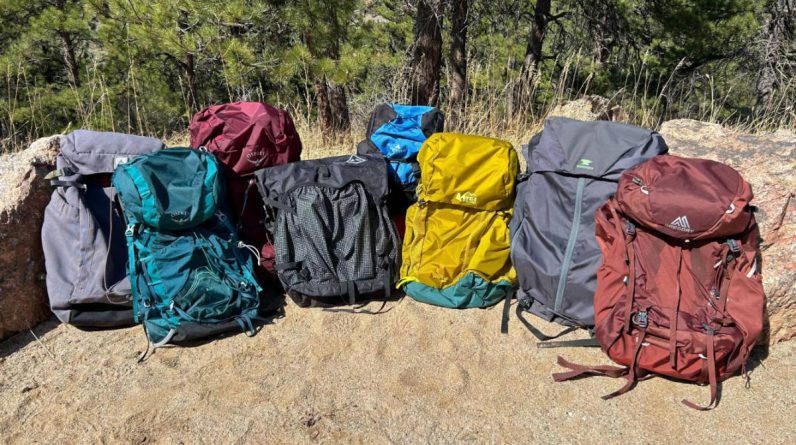
Welcome to our beginner’s guide to selecting the ideal backpack size for your outdoor adventures! In this article, you will learn the important factors to consider when choosing a backpack size that fits your needs. Whether you’re going on a day hike, weekend camping trip, or a multi-day backpacking excursion, finding the right size backpack is crucial for comfort and convenience.
So, how do you choose the right size backpack for your outdoor activities? Firstly, consider the duration of your trip and the amount of gear you need to carry. For day hikes or shorter excursions, a smaller backpack with a capacity of around 20-30 liters may be sufficient. If you plan to be out for longer periods or need to carry more equipment, opt for a larger backpack with a capacity of 40-70 liters. It’s also important to ensure that the backpack’s weight is proportionate to your own body weight, as an ill-fitting pack can lead to discomfort and strain. With these considerations in mind, you’ll be well on your way to selecting the perfect backpack size for your outdoor adventures. Now let’s dig into the details!
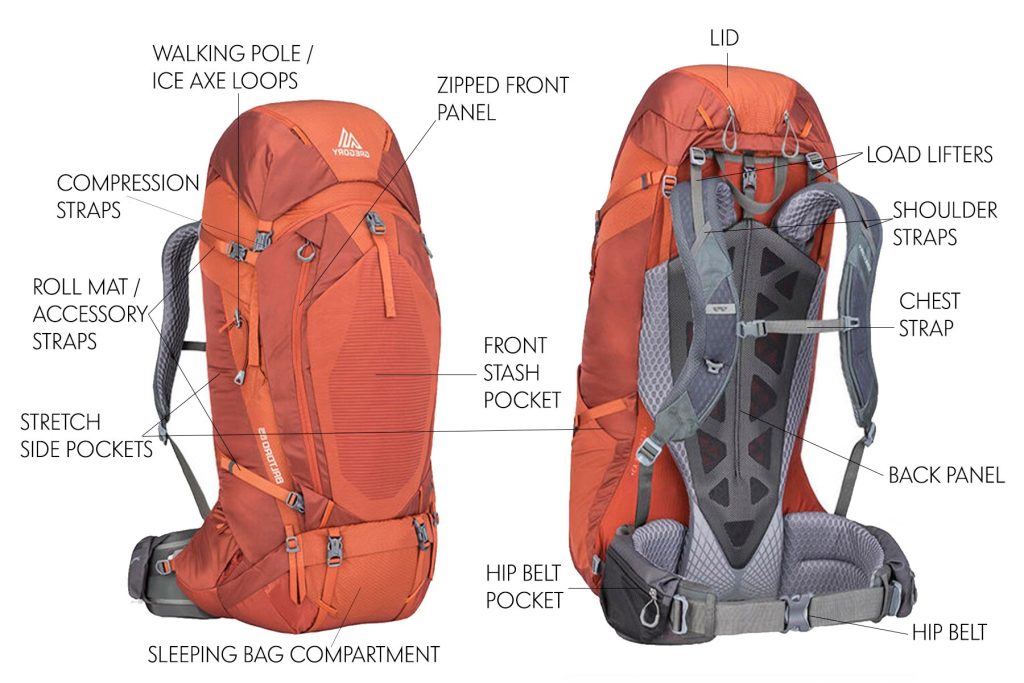
This image is property of www.atlasandboots.com.
Understanding the Importance of Backpack Size
Outdoor adventures require careful planning and preparation. One crucial aspect that is often overlooked is the size of your backpack. Choosing the right backpack size is essential for a comfortable and enjoyable experience in the great outdoors. In this beginner’s guide, we will explore why backpack size matters and how it affects both comfort and functionality during your outdoor adventures.
Why does backpack size matter for outdoor adventures?
The size of your backpack plays a significant role in determining your overall comfort and functionality on your outdoor adventures. A backpack that is too small will not be able to accommodate all your gear and necessities, making it challenging to stay organized and carry everything you need. On the other hand, a backpack that is too large may be difficult to maneuver and can lead to excessive weight and unnecessary strain on your body.
How does backpack size affect comfort and functionality?
The size of your backpack directly affects your comfort and functionality while exploring the great outdoors. A properly sized backpack distributes the weight of your gear evenly, ensuring greater stability and balance. It should also have a well-padded back panel and adjustable straps to provide optimal support and minimize discomfort. Additionally, a backpack that is too small may restrict your movement and limit your ability to carry essential items, while a backpack that is too large may cause unnecessary strain on your body.
Factors to Consider When Choosing Backpack Size
Choosing the right backpack size involves considering various factors that will impact your outdoor adventure experience. Here are some essential considerations to keep in mind:
Duration and Type of Outdoor Adventure
The duration and type of outdoor adventure you plan to embark on are crucial factors in determining the appropriate backpack size. For shorter trips, a smaller backpack may suffice, while longer expeditions may require a larger backpack to accommodate additional supplies.
Seasonal Considerations
The time of year and the type of weather conditions you expect to encounter also influence the size of your backpack. Winter adventures, for example, often require more gear and layers of clothing, necessitating a larger backpack compared to summer outings.
Personal Items and Gear Requirements
Consider the personal items and specific gear you need to bring on your outdoor adventure. Will you be carrying a camera, a tent, or bulky equipment? Ensure that your backpack has enough room to comfortably store all your necessities without being too cramped.
Body Size and Comfort
Your body size and shape should also play a role in determining the size of your backpack. Take your torso length into consideration, as many backpacks are available in different sizes to ensure a proper fit. A backpack that is too big or too small for your body will be uncomfortable and may cause strain or soreness.
Weight Distribution and Balance
Proper weight distribution and balance are essential for a comfortable and enjoyable outdoor adventure. When selecting a backpack size, consider how your gear will be distributed and if it will be evenly balanced. An imbalanced backpack can cause discomfort and impact your ability to navigate rough terrains.
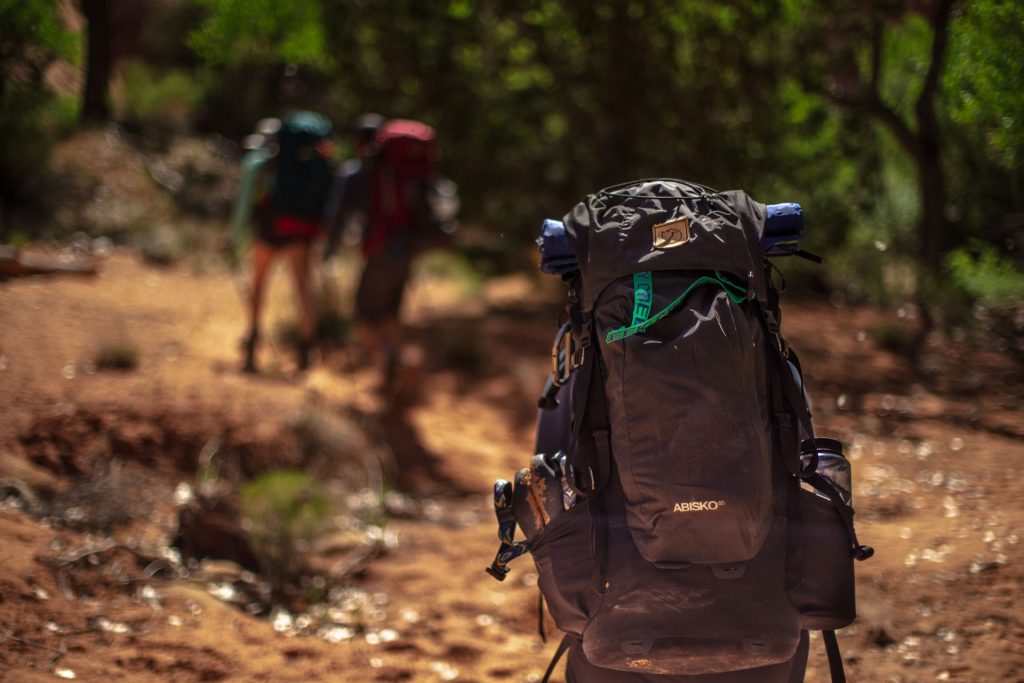
This image is property of www.themanual.com.
Determining the Correct Backpack Capacity
Now that you understand the importance of backpack size, it’s time to determine the correct backpack capacity for your needs. Here are some steps to guide you in finding the ideal size:
Researching Backpack Capacities
Start by researching the different backpack capacities available on the market. Backpacks typically range from 20 liters for day trips to over 70 liters for extended expeditions. This research will give you an idea of the range of sizes available and help you narrow down your options.
Understanding Backpack Capacity Measurement
Backpack capacity is typically measured in liters, indicating the volume of the main compartment. It’s important to note that the capacity does not include external pockets or compartments. Keep in mind that the actual usable space may vary, so it’s always a good idea to test the pack with your gear before making a final decision.
Analyzing Your Gear and Requirements
Next, take inventory of the gear and personal items you plan to bring on your outdoor adventure. Lay them out and consider their sizes and volumes. This exercise will help you determine the minimum capacity you require to comfortably fit all your essentials.
Considerations for Multiday Trips
If you plan on embarking on multiday trips, it’s essential to consider a backpack with a larger capacity. This will allow you to carry extra clothing, food, and overnight camping gear. Additionally, you may also need to consider external attachment options to carry larger items such as a tent or sleeping bag.
Specialty Gear and Equipment
Certain outdoor activities, such as mountaineering or cycling, may require specialized gear and equipment. These activities often necessitate additional storage space for items like climbing ropes or biking tools. Ensure that your backpack has the necessary capacity to accommodate these specialty items.
Sizing and Fit Considerations
Once you have determined the ideal backpack capacity, it’s time to focus on finding the right fit. A properly sized and fitted backpack is crucial for optimal comfort and functionality.
Measuring Your Torso Length
To find the correct backpack size, measure your torso length. This measurement is taken from the base of your neck to the top of your hips. Most backpack manufacturers provide torso length guidelines to help you select the appropriate size.
Adjustability and Customization Features
Look for backpacks that offer adjustable features, such as shoulder straps and hip belts. These customizable options allow you to fine-tune the fit to your body, ensuring optimal comfort and load distribution.
Evaluating Hip Belt Size and Fit
The hip belt is an essential component of a properly fitting backpack. It helps transfer the weight of the pack from your shoulders to your hips, reducing strain and fatigue. Ensure that the hip belt fits snugly around your hip bones, providing maximum support.
Ergonomics and Load Distribution
Consider the ergonomics of the backpack, focusing on the design and padding of the shoulder straps and back panel. These features affect not only comfort but also load distribution. Look for backpacks with well-padded straps and a breathable back panel for added comfort during long hikes or treks.
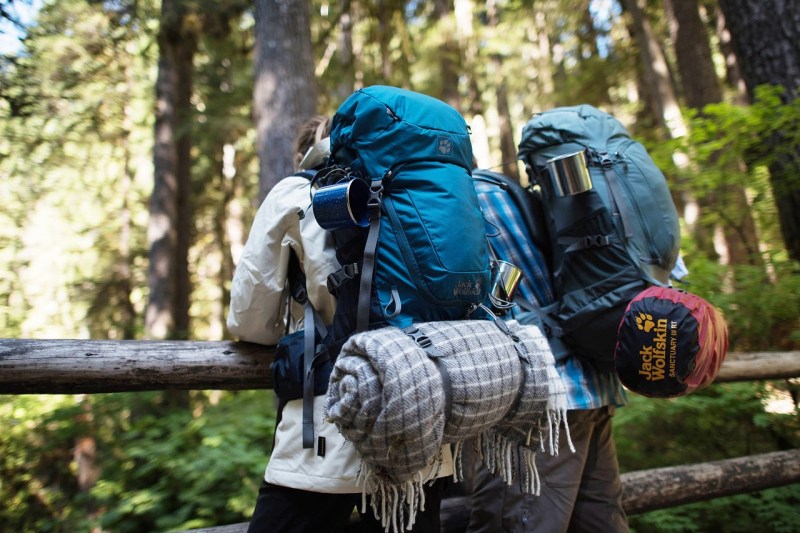
This image is property of www.themanual.com.
Testing and Trying Different Backpacks
It’s important to test and try different backpacks before making your final decision. Here are some steps to help you find the perfect fit:
Visiting Outdoor Specialty Stores
Visit outdoor specialty stores where you can find a wide range of backpacks to try on. The knowledgeable staff can assist you in finding the right size and fit. Take your time trying on different models and adjusting them to ensure a proper fit.
Consulting with Experts
Consult with outdoor experts or experienced backpackers who can provide guidance and advice based on their own experiences. They may have insights into specific brands or features that will be beneficial for your outdoor adventures.
Importance of Trying Out Different Models
When trying out different backpacks, pay attention to how they feel when loaded with weight. Walk around the store with the pack on to gauge its comfort and stability. Take note of any pressure points or areas that cause discomfort.
Load Simulation and Weight Distribution
Efficient weight distribution is crucial for comfortable backpacking. Ask the store if they have sandbags or weights that can be used to simulate a loaded pack. This allows you to experience how different backpacks distribute weight and handle heavier loads.
Evaluating Backpack Features and Design
Beyond size and fit, it’s important to evaluate the features and design of a backpack. Here are some key elements to consider:
Exterior Attachment Options
Look for backpacks with external attachment options, such as gear loops or compression straps. These features allow you to secure additional gear or equipment, increasing the carrying capacity of your backpack.
Accessibility and Organizational Features
Consider the accessibility and organizational features of the backpack. Look for multiple compartments, inner sleeves, and pockets that allow for efficient organization and easy access to your gear and personal items.
Suspension Systems and Load Support
Take note of the suspension system and load support features of the backpack. Look for padded shoulder straps, a supportive hip belt, and a well-ventilated back panel. These features enhance comfort and load distribution during long hikes or treks.
Ventilation and Breathability
Consider the ventilation and breathability features of the backpack, especially if you will be hiking in warm or humid conditions. Look for mesh panels or airflow channels that promote better airflow and reduce heat buildup on your back.

This image is property of travellemming.com.
Understanding Weight Considerations
When choosing a backpack, weight considerations should not be overlooked. Here are some points to keep in mind:
Importance of Ultra-Lightweight Backpacks
Ultra-lightweight backpacks have gained popularity in recent years due to their ability to reduce strain and fatigue. They are designed to be lightweight without compromising durability. Consider the weight of your backpack and the specific requirements of your outdoor adventure.
Balancing Weight and Durability
While lighter backpacks are more comfortable to carry, they may sacrifice durability and longevity. Strike a balance between weight and durability based on your personal preferences and the demands of your outdoor adventures.
Weight Distribution for Optimal Comfort
A well-designed backpack allows for optimal weight distribution, reducing strain on your body and maximizing comfort. Ensure that the weight of your gear and personal items is evenly distributed within the backpack to avoid discomfort or imbalances.
Trade-offs and Personal Preferences
When it comes to backpack weight, it’s essential to consider your personal preferences and priorities. Some may prioritize a lighter pack, while others prioritize durability or additional features. Think about what matters most to you and make an informed decision based on your needs.
Comparing Different Backpack Sizes
To further aid you in selecting the ideal backpack size, here is an overview of the different capacity options available:
Small Capacity Backpacks
Small capacity backpacks typically range from 20 to 40 liters and are ideal for day trips or shorter hikes. They are lightweight and compact, allowing for easy maneuverability while still providing enough space for essential items.
Medium Capacity Backpacks
Medium capacity backpacks range from 40 to 60 liters, making them suitable for overnight trips or weekend adventures. They offer more space for additional gear and personal items while maintaining a manageable size and weight.
Large Capacity Backpacks
Large capacity backpacks exceed 60 liters and are designed for extended expeditions or multiday trips. They provide ample space for extra clothing, food, and camping gear. However, it’s important to ensure that you can comfortably carry the additional weight.
Hybrid and Variable Capacity Options
Some backpacks offer hybrid or variable capacity options, allowing you to adjust the size as needed. These backpacks often feature expandable compartments or modular designs, providing flexibility for various outdoor activities and gear requirements.
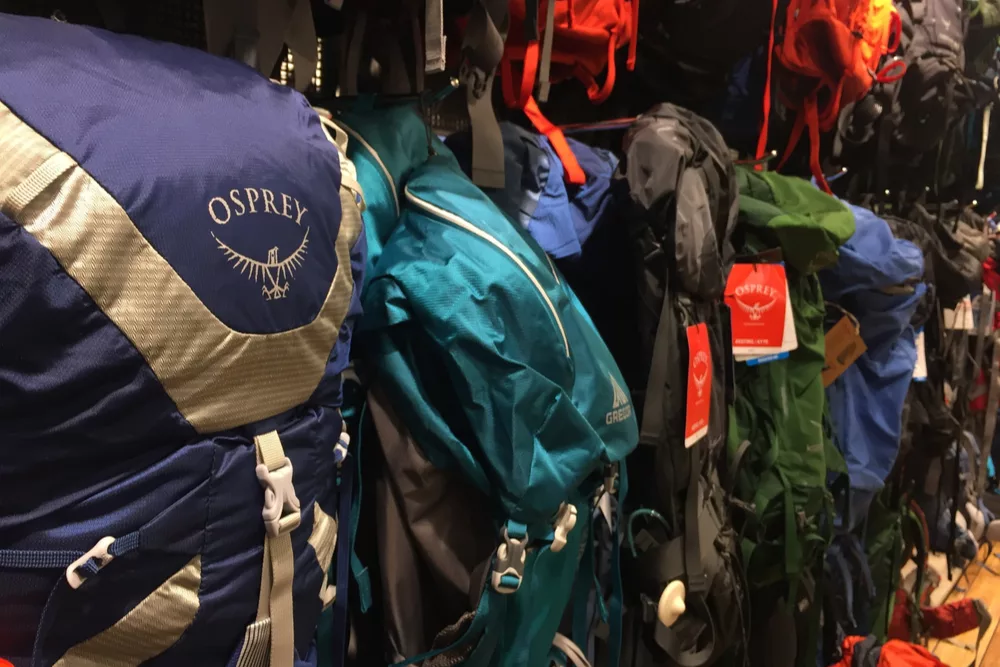
This image is property of www.atlasandboots.com.
Considerations for Specific Outdoor Activities
Different outdoor activities have unique gear and equipment requirements. Here are some key considerations for specific activities:
Backpack Size for Hiking and Trekking
For hiking and trekking, a medium capacity backpack is generally suitable. It should have enough space for your essentials, including water, food, extra layers, and safety equipment. Consider the specific terrain and weather conditions of your hike when determining the overall capacity.
Camping and Overnight Backpacking
When camping or undertaking overnight backpacking trips, a larger backpack is often necessary. The additional space is needed for a tent, cooking utensils, sleeping bag, and extra clothing. Ensure that your backpack has external attachment options for larger items such as a tent or sleeping mat.
Mountaineering and Climbing
Mountaineering and climbing often require specialized gear, including ropes, ice axes, and climbing helmets. These activities may necessitate a larger backpack with external attachment options to accommodate the additional equipment.
Cycling and Bikepacking
For cycling and bikepacking adventures, consider a smaller capacity backpack that focuses on weight distribution and aerodynamics. Look for a backpack specifically designed for cycling, with features such as hydration bladder compatibility and helmet attachments.
Traveling and Backpacking Abroad
If you plan on backpacking abroad or traveling long-term, consider a larger capacity backpack that can accommodate all your travel essentials. Look for backpacks designed for travel, with features like lockable zippers, easy-access compartments, and comfortable suspension systems.
Conclusion
In conclusion, selecting the ideal backpack size is crucial for a comfortable, enjoyable, and well-organized outdoor adventure. Consider factors such as the duration of your trip, seasonal considerations, gear requirements, body size, weight distribution, and specific activity needs. Take the time to test and try different backpacks, ensuring that they fit properly and meet your personal preferences. Remember to evaluate additional features and weight considerations to find the perfect balance between functionality, comfort, and personal needs. With the right backpack size, you’ll be well-equipped to embark on your outdoor adventures with confidence and ease. Happy backpacking!





